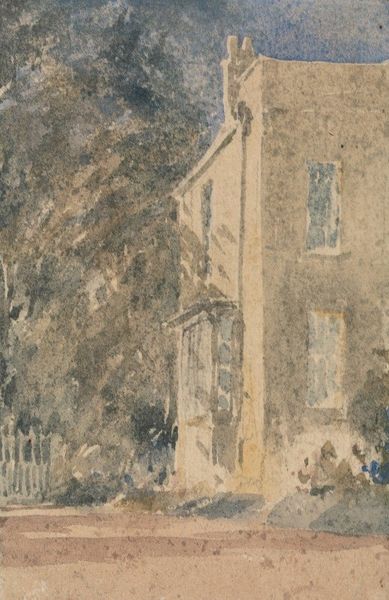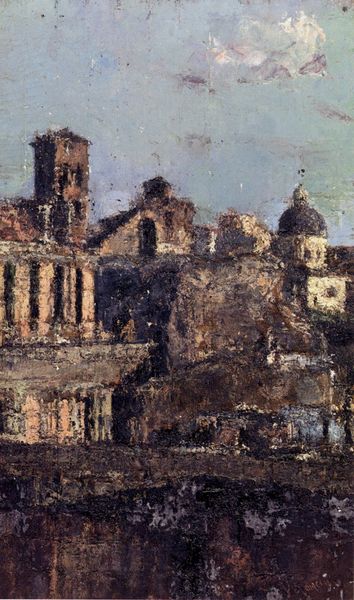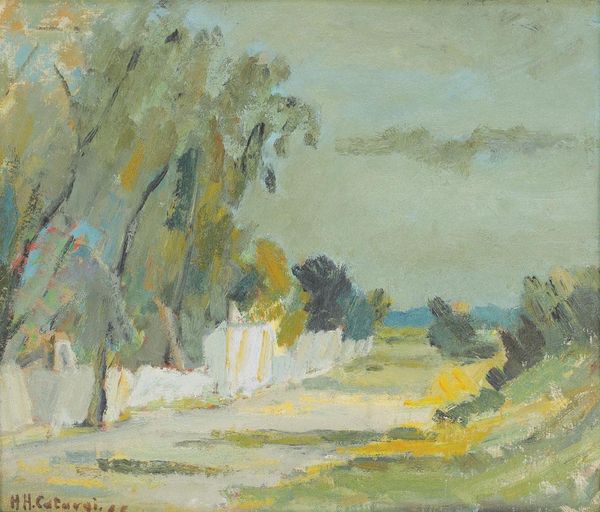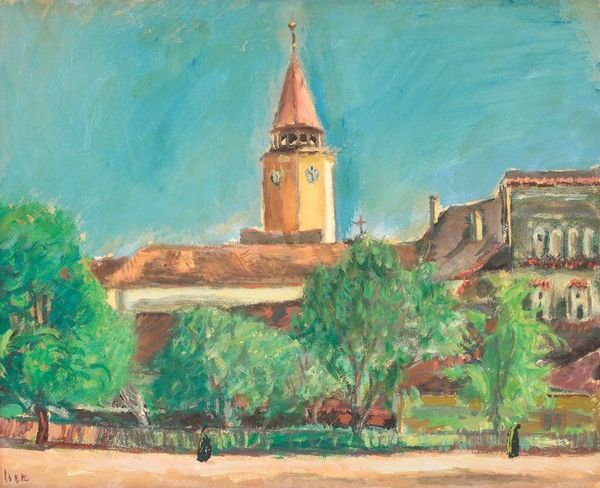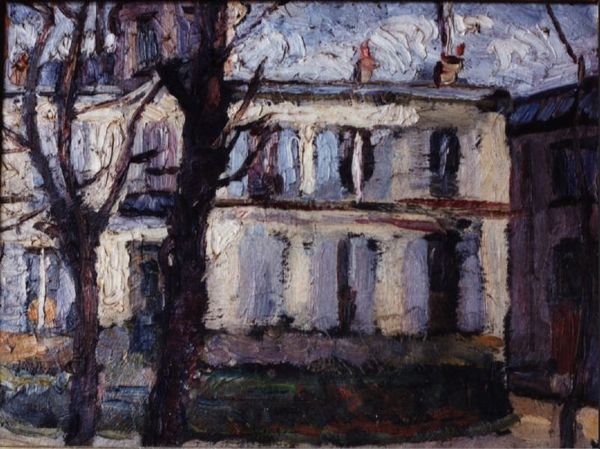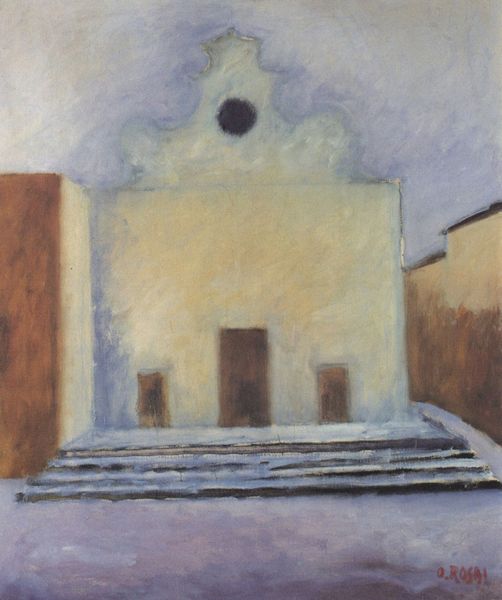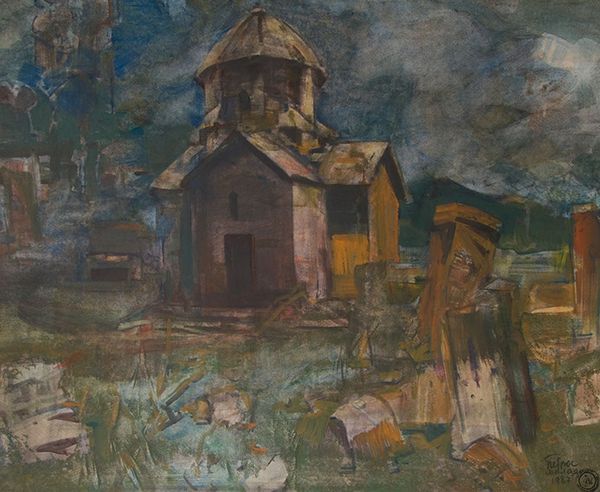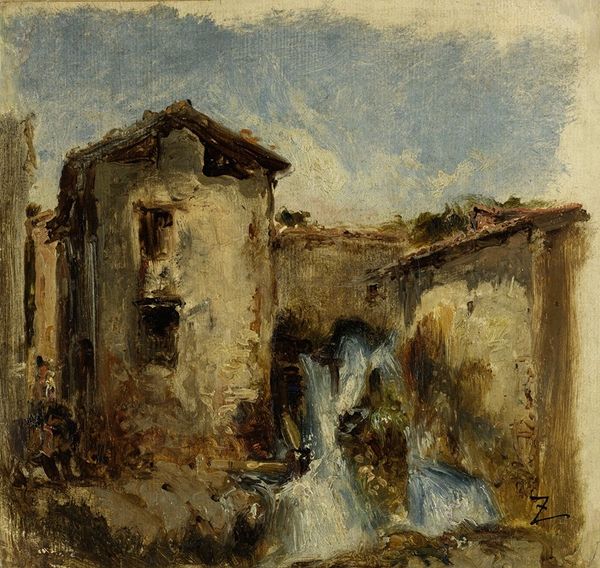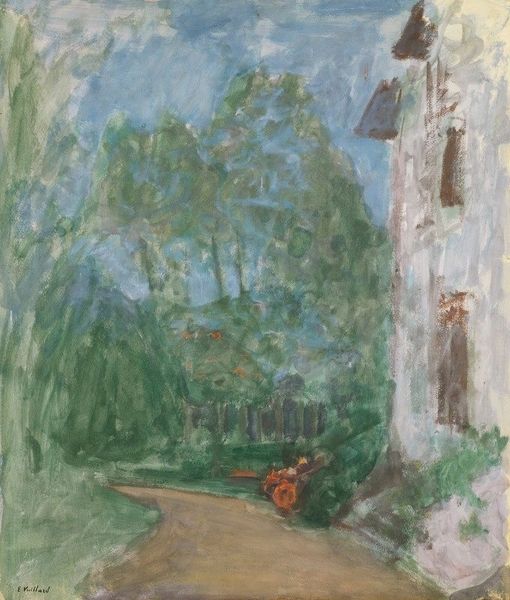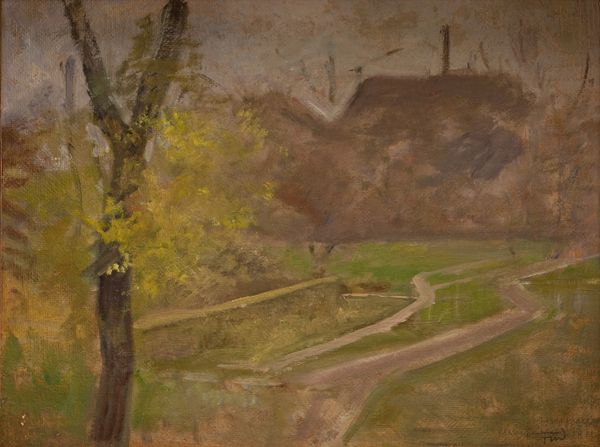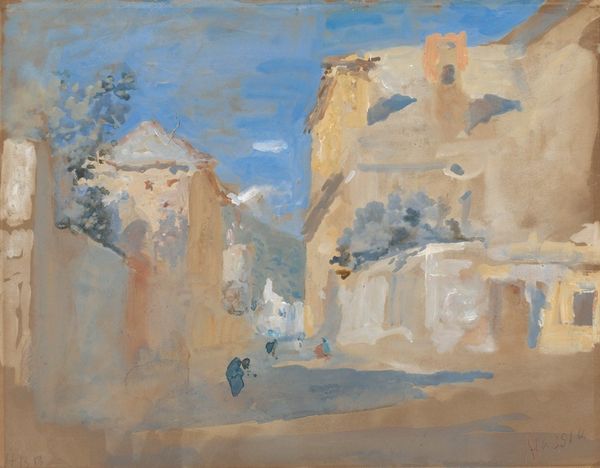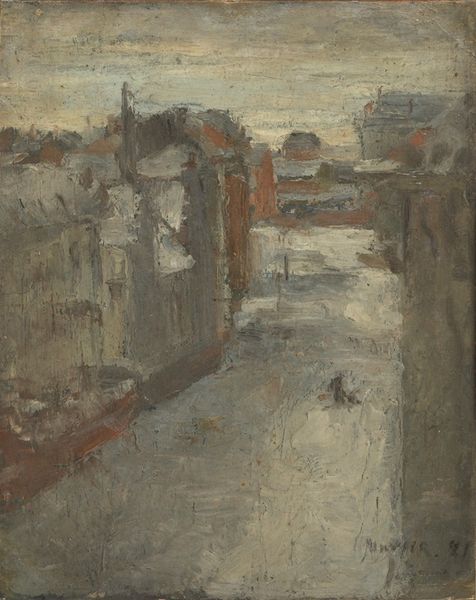
Copyright: Public Domain: Artvee
Editor: Here we have Édouard Vuillard's "La Place de la Concorde," created around 1925 using oil paint, charcoal, pastel, and watercolor. It has this ghostly, almost ephemeral quality to it. What draws your eye when you look at this piece? Curator: I'm immediately struck by the artist's layered approach, mixing media so freely. It raises interesting questions about Vuillard’s process and his relationship to the rapidly changing industrial landscape of Paris at the time. Editor: In what way? Curator: Well, think about the materials themselves. Oil paint traditionally signals permanence, but then it's combined with the more transient nature of pastel, charcoal and watercolor. This tension mirrors the societal shift, doesn't it? A constant struggle between preserving the old and embracing the new mass production. Did Vuillard purchase pre-mixed colors? Did he prepare any of them himself? And the paper that he used... Editor: So, it’s about the act of making itself? Curator: Precisely. The Place de la Concorde was historically a site of both revolution and celebration. Vuillard captures this sense of flux, not just in the subject, but in his very method. He is blurring boundaries between traditionally fine arts painting, sketching, and even commercial design by emphasizing his creative labor and material exploration, suggesting a new visual order in the face of massive modernization. Editor: That's fascinating! I never considered the choice of materials as being so connected to the historical context. Curator: The materiality directs our attention to the circumstances of its creation, offering a tangible connection to the societal forces that shaped the artist's vision. Hopefully listeners can discover details like these the next time they're able to experience artwork in person.
Comments
No comments
Be the first to comment and join the conversation on the ultimate creative platform.
